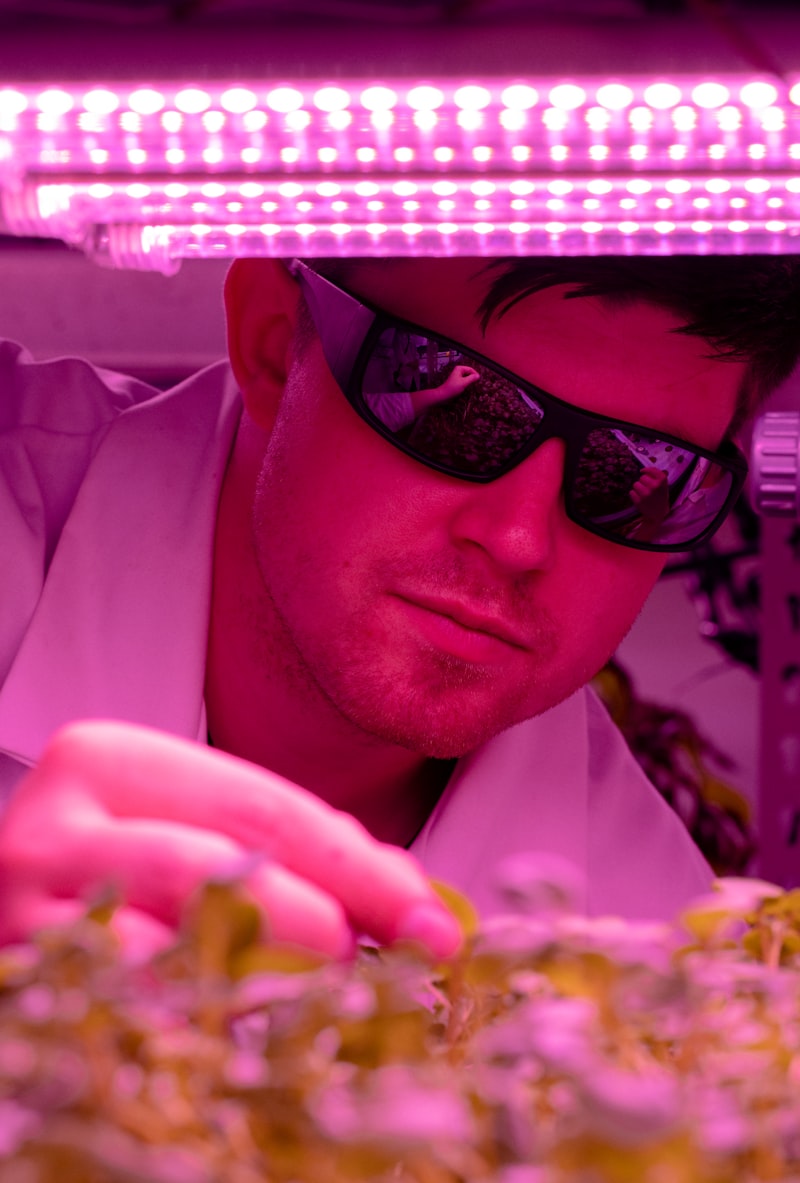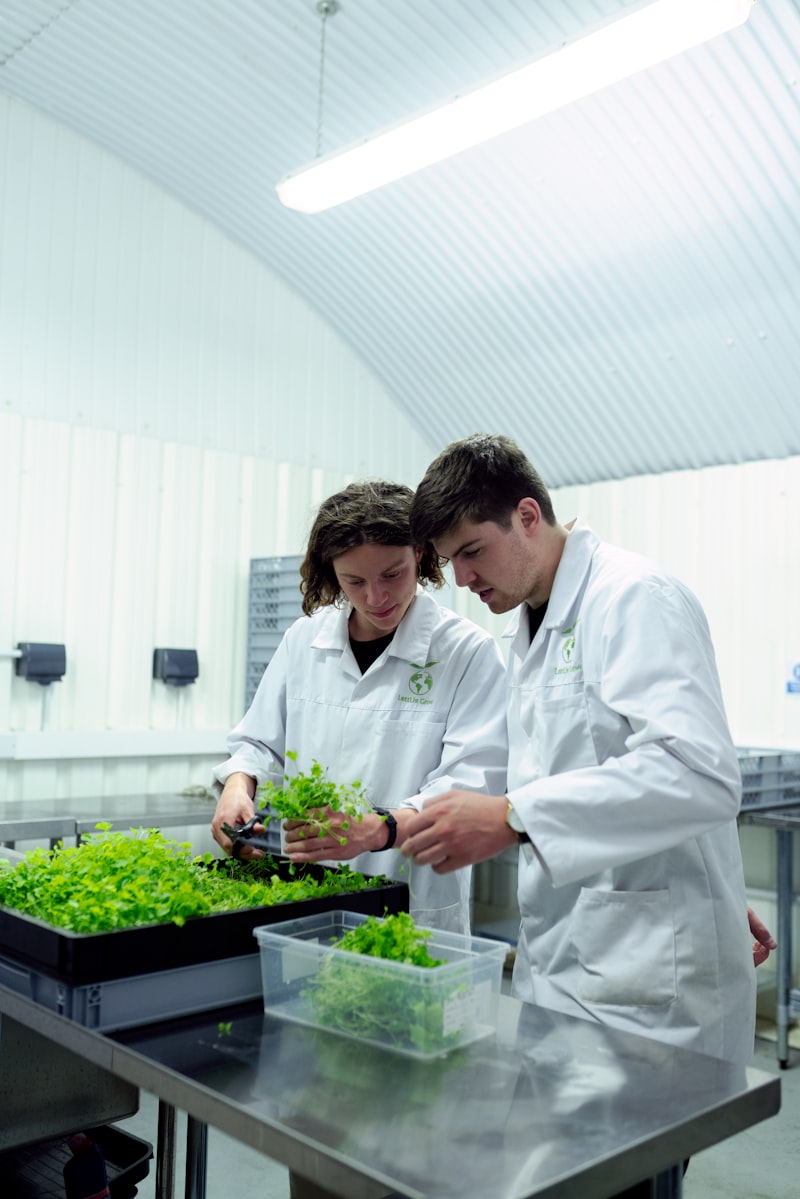One of the most remarkable innovations in modern agriculture is the advent of precision farming. Imagine a farmer equipped not just with a plow and sheer hard work, but also with drones and GPS-guided machinery. These tools enable farmers to analyze their fields down to the square meter, optimizing the use of resources like water and fertilizers. It’s like having a detailed map of the land’s needs, allowing for targeted interventions that maximize yields while minimizing waste.
Furthermore, the integration of data analytics and machine learning has taken farming to new heights of efficiency. By harnessing big data, farmers can make informed decisions based on real-time information about weather patterns, soil health, and crop growth. This predictive capability empowers them to preemptively address issues like pest outbreaks or nutrient deficiencies, ensuring healthier crops and higher yields.
Another game-changer is the development of genetically modified organisms (GMOs) and advanced biotechnology. These innovations have led to the creation of crops that are more resistant to diseases, pests, and adverse weather conditions. Farmers can now grow food in environments previously deemed unsuitable, expanding agricultural possibilities and ensuring food security in challenging climates.
Moreover, smart farming technologies are not just about increasing yields; they’re also about sustainability. Techniques like vertical farming and hydroponics allow crops to be grown in controlled indoor environments, using significantly less water and land compared to traditional methods. This not only conserves resources but also reduces the environmental impact of agriculture.
In essence, technology isn’t just enhancing agricultural productivity; it’s reshaping the entire landscape of farming. It’s about empowering farmers with the tools and knowledge they need to feed a growing global population sustainably. As we continue to innovate, one thing is clear: the future of farming looks brighter than ever before, thanks to the transformative power of technology.
Harnessing Innovation: How Technology is Revolutionizing Agricultural Efficiency
In today’s fast-paced world, where every second counts, farmers are turning to technology to streamline processes and boost productivity. From drones that monitor crop health to smart irrigation systems that optimize water usage, technological advancements are reshaping agriculture as we know it.
One of the most game-changing innovations is precision farming. Imagine a farmer equipped with real-time data about soil conditions, weather patterns, and crop health, all accessible from a smartphone or tablet. This data-driven approach allows for precise decisions like when to plant, irrigate, or apply fertilizers, maximizing yields while minimizing costs and environmental impact.
Moreover, artificial intelligence (AI) is playing a pivotal role in this agricultural revolution. AI-powered algorithms can analyze vast amounts of data collected from sensors and satellites to predict crop yields, detect diseases early on, and even suggest personalized treatment plans for plants. It’s like having a virtual agronomist in your pocket, guiding farmers towards optimal outcomes.
But it’s not just about efficiency; it’s also about sustainability. Technologies such as vertical farming and hydroponics are enabling food production in urban environments and arid regions where traditional agriculture would struggle. These methods use less water and land compared to conventional farming, making them crucial in the face of climate change and population growth.

Furthermore, advancements in biotechnology are enhancing crop resilience and nutritional content. Scientists are developing genetically modified crops that can withstand pests, diseases, and harsh weather conditions, ensuring a more reliable food supply for a growing global population.
From Field to Tablet: The Role of AI in Modern Farming Techniques
Gone are the days when farming relied solely on traditional methods passed down through generations. Today, agriculture is embracing Artificial Intelligence (AI) to boost efficiency, yield, and sustainability. Imagine a scenario where a farmer can monitor soil quality, crop health, and even predict weather patterns—all from a handheld tablet. This is the new face of farming, where data-driven decisions are becoming as essential as the tractor itself.
AI in agriculture begins with data collection. Sensors placed across fields gather real-time information on soil moisture, temperature, and nutrient levels. This data is then analyzed by AI algorithms that provide actionable insights to farmers. For instance, AI can recommend precise amounts of irrigation or fertilizer based on specific crop needs, optimizing resource usage while minimizing environmental impact.
Moreover, AI-powered drones and satellites offer a bird’s-eye view of the farm. They can detect early signs of disease or pest infestation before they are visible to the naked eye. This proactive approach enables farmers to take timely preventive measures, reducing crop loss and ensuring healthier yields.
The beauty of AI lies in its ability to learn and adapt. Machine learning algorithms can process vast amounts of historical data to predict crop yields with remarkable accuracy. Farmers can now forecast market trends and adjust planting strategies accordingly, maximizing profitability in a volatile agricultural market.
In essence, AI is not just a tool but a game-changer in modern farming. It empowers farmers to make informed decisions based on data-driven insights, ultimately leading to increased productivity and sustainable practices. As technology continues to evolve, the marriage of agriculture and AI promises a future where farms are not only more efficient but also environmentally responsible.
Imagine a future where every seed planted, every drop of water used, and every inch of soil nurtured is guided by the intelligence of machines. This is the promise of AI in modern farming—a promise that is already bearing fruit across fields worldwide.
Smart Farms: IoT and Sensor Tech Transforming Agricultural Practices
IoT in agriculture isn’t just a buzzword; it’s a game-changer. By embedding sensors in soil, crops, and even livestock, farmers can gather real-time data on moisture levels, nutrient content, growth patterns, and animal health. This wealth of information allows for precise decision-making, from when to irrigate a field to which areas need more fertilizer, all based on actual data rather than guesswork.
Take soil sensors, for example. These small, smart devices are buried in the ground and constantly measure key soil parameters like moisture, temperature, and pH levels. This data is then transmitted wirelessly to a central hub where it’s analyzed. Farmers can access this information remotely through their smartphones or computers, enabling them to make timely adjustments that optimize crop yield and quality.
IoT doesn’t stop at soil sensors. Smart farms utilize drones equipped with multispectral cameras to survey vast fields and pinpoint areas of stress or disease in crops. This early detection allows farmers to intervene promptly, reducing crop loss and minimizing the need for chemical treatments.

Livestock management has also benefited immensely from IoT integration. Wearable sensors on animals can track vital signs, behavior patterns, and even predict health issues before they become critical. Farmers receive alerts on their devices if a cow is showing signs of illness or distress, enabling them to provide timely care and maintain herd health.
In essence, IoT and sensor technologies are akin to a farm’s nervous system, constantly gathering and relaying vital information. This interconnectedness not only enhances productivity and efficiency but also promotes sustainability by reducing resource wastage and environmental impact.
As we look to the future, the potential of Smart Farms seems limitless. With advancements in AI and machine learning, these systems will become even more autonomous and intelligent, capable of making complex decisions independently. The era of connected agriculture has dawned, promising a more efficient, sustainable, and productive future for farmers and consumers alike.
Precision Agriculture: Data-Driven Strategies Boosting Crop Yields
At its core, precision agriculture harnesses the power of data analytics, satellite imagery, and advanced sensors to provide farmers with unprecedented levels of information about their fields. By collecting real-time data on soil composition, moisture levels, temperature variations, and crop health, farmers can make informed decisions with surgical precision. Gone are the days of relying solely on intuition and traditional methods; now, every action is backed by concrete data points.
One of the key benefits of these data-driven strategies is their ability to optimize resource utilization. Imagine being able to apply fertilizers and pesticides only where they are needed most, based on detailed soil nutrient maps and crop health indicators. This targeted approach not only minimizes input costs but also reduces environmental impact by preventing over-application of chemicals.
Moreover, precision agriculture enables proactive crop management. Farmers can detect early signs of disease outbreaks or nutrient deficiencies before they escalate, allowing for timely interventions that can save entire harvests. This proactive stance not only protects yields but also ensures consistent crop quality year after year.
In essence, precision agriculture represents a paradigm shift from traditional farming practices to a more scientific and precise approach. It empowers farmers to become data-savvy decision-makers, leveraging technology to maximize productivity while minimizing environmental footprint. As technology continues to evolve, so too will the capabilities of precision agriculture, promising even greater efficiencies and sustainability in the future.
Drones in Agriculture: High-Tech Solutions for Monitoring and Management
Drones, or unmanned aerial vehicles (UAVs), are not just gadgets anymore; they’re indispensable assets. They soar above the crops, equipped with advanced cameras and sensors that capture detailed images and data. This data isn’t just pretty pictures; it’s actionable insights that farmers use to make informed decisions. From assessing crop health to detecting irrigation issues, drones provide a level of detail that traditional methods simply can’t match.
One of the most striking benefits of drones in agriculture is their ability to monitor crop health in real time. By analyzing multispectral and thermal imagery, drones can detect early signs of pest infestations, diseases, or nutrient deficiencies. This proactive approach allows farmers to intervene swiftly, minimizing crop damage and optimizing yields.
Moreover, drones play a crucial role in precision agriculture. By precisely spraying fertilizers or pesticides only where needed, farmers can reduce costs and environmental impact significantly. This targeted application ensures that resources are used efficiently, benefiting both the farm’s bottom line and sustainability efforts.
Picture this: a farmer can now cover vast acres of land in a fraction of the time it would take on foot or with traditional machinery. Drones zip across fields autonomously, following predefined flight paths or controlled manually by a farmer on the ground. It’s like having a high-tech assistant that tirelessly patrols and monitors the farm, 24/7.
The adoption of drones in agriculture isn’t just a trend; it’s a transformation. It empowers farmers to make data-driven decisions, enhances productivity, and promotes environmental stewardship. As technology continues to advance, drones will likely become even more integral to the future of farming, ushering in an era where innovation meets sustainability for a bountiful harvest.
Blockchain in Farming: Securing Supply Chains and Enhancing Transparency
At its core, blockchain is a decentralized digital ledger that records transactions across multiple computers. Each transaction or “block” is linked to the previous one, creating a chain of information that is immutable and transparent. In farming, this means that every action taken—from planting seeds to harvesting crops—is recorded in real-time and cannot be altered retroactively.
This technology addresses significant challenges in agriculture, such as food fraud and traceability. With blockchain, consumers can trace the origins of their food with ease, knowing exactly where it was grown, how it was processed, and when it arrived at the store. For farmers, this level of transparency builds trust and opens doors to new markets where consumers prioritize ethical sourcing and sustainability.
Blockchain also enhances supply chain efficiency by reducing paperwork and streamlining processes. Smart contracts, self-executing contracts with the terms directly written into code, automate payments and agreements between farmers, distributors, and retailers. This automation minimizes disputes and delays, ensuring that farmers receive fair compensation for their produce promptly.
Moreover, blockchain in farming strengthens food safety measures. By providing a transparent record of each product’s journey, it becomes easier to pinpoint and recall contaminated or expired products swiftly, preventing potential health risks for consumers.
The impact of blockchain in agriculture extends beyond efficiency and safety—it fosters innovation and collaboration across the industry. Farmers can access data-driven insights into crop yields, soil quality, and market demand, enabling them to make informed decisions that optimize production and reduce waste.
Frequently Asked Questions
What role does artificial intelligence play in modern agriculture
Learn how artificial intelligence revolutionizes modern agriculture, enhancing crop yield prediction, optimizing resource management, and automating farming tasks.
How does precision farming contribute to higher crop yields
Precision farming enhances crop yields by using advanced technologies like GPS, sensors, and data analytics to optimize farming practices. It allows farmers to apply resources like water, fertilizers, and pesticides more efficiently, tailored to specific crop needs and soil conditions.
How are drones and satellite imagery transforming farming practices
Discover how drones and satellite imagery are revolutionizing farming methods. Learn how these technologies enhance precision agriculture, offering farmers real-time data on crop health, soil conditions, and more. Explore the benefits of improved efficiency, resource management, and yield optimization.
Can smart irrigation systems save water and improve crop quality
Learn how smart irrigation systems can conserve water and enhance crop quality through efficient water management techniques and automated controls.
What are the key technologies boosting farm efficiency today
Discover the key technologies enhancing farm efficiency today. Learn about innovations such as precision agriculture, IoT sensors, AI-driven analytics, and robotic automation that streamline operations and improve productivity.


